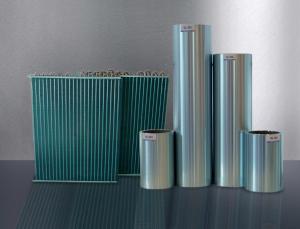Aluminum foil, that shiny, thin, and versatile material, has found its way into various aspects of our daily lives. From the kitchen to the construction industry, it’s hard to imagine a world without it. But did you know that aluminum foil also plays a significant role in the medical field? Let’s dive into the fascinating world of aluminum foil and explore its applications in healthcare, one of the most critical sectors of our society.
The Wonder Material: Aluminum Foil
Aluminum foil is made from aluminum, a metal known for its lightweight, malleability, and resistance to corrosion. It’s these properties that make it an ideal material for a wide range of uses. In the medical field, aluminum foil’s unique characteristics have been harnessed to improve patient care and advance medical technology.
Sterilization and Packaging
One of the primary concerns in healthcare is maintaining sterility. Aluminum foil’s impermeable nature makes it perfect for packaging medical instruments and supplies. It ensures that the contents remain uncontaminated, providing a barrier against bacteria and other pathogens. This is particularly important for surgical tools, where the risk of infection is high.
Radiology and Imaging
In the realm of medical imaging, aluminum foil has its applications too. It’s used to create shielding for X-ray machines and other imaging devices. The metal’s ability to block radiation makes it a crucial component in protecting both patients and medical staff from harmful exposure.
Drug Delivery Systems
Aluminum foil is also utilized in pharmaceuticals for drug delivery systems. Its malleability allows it to be shaped into various forms, such as blister packs, which are used to store and dispense medication. This not only ensures the medication’s freshness and potency but also provides a convenient way for patients to manage their medication intake.
Burns and Wound Care
For burns and wound care, aluminum foil has some surprising uses. It can be used as a temporary dressing to protect the wound from external contaminants. Its reflective properties help to keep the wound moist, which is essential for the healing process. Moreover, in emergency situations, aluminum foil can be used to create makeshift splints to immobilize broken bones until professional medical help is available.
Aesthetic Medicine
In the world of aesthetics, aluminum foil finds its niche in certain treatments. For instance, it’s used in some cryotherapy procedures to protect the skin from extreme cold. It’s also seen in the application of certain masks and peels, where its conformability allows it to adhere to the contours of the face, ensuring an even distribution of the treatment product.
The Future of Aluminum Foil in Medicine
As medical technology continues to evolve, the applications of aluminum foil in the medical field are bound to expand. Researchers are exploring new ways to use this material in innovative medical devices and treatments. From improving diagnostic tools to enhancing patient comfort during procedures, the potential for aluminum foil in medicine is vast.
The Human Touch
While aluminum foil may seem like a cold, lifeless material, its applications in the medical field bring a touch of humanity to healthcare. It’s not just about the technology; it’s about how we use that technology to improve lives. The use of aluminum foil in medicine is a testament to our ingenuity and our commitment to providing the best possible care for our patients.
Conclusion
Aluminum foil’s journey from a simple household item to a critical component in the medical field is a remarkable one. Its versatility, coupled with its unique properties, has made it an indispensable tool in healthcare. As we continue to innovate and push the boundaries of medical science, aluminum foil will undoubtedly play a role in shaping the future of medicine. So next time you unwrap that aluminum foil in your kitchen, remember the incredible impact this material has on healthcare and the lives of millions.

